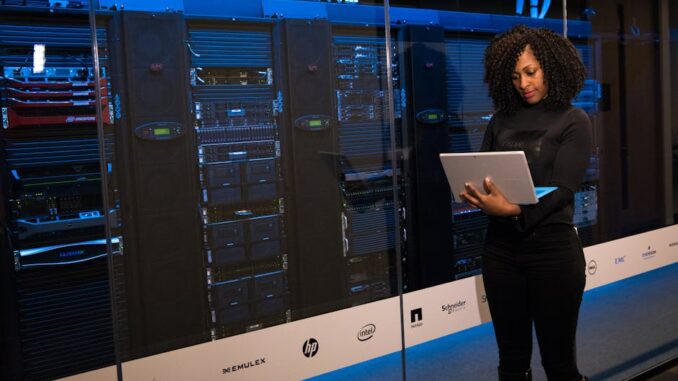
Summary
A ransomware attack on a London pathology service provider forced hospitals to cancel procedures, impacting thousands of patients. The attack highlighted the vulnerability of healthcare systems to cyber threats and the potential for widespread disruption to patient care. The incident prompted investigations and renewed calls for enhanced cybersecurity measures in the healthcare sector.
** Main Story**
Okay, so you remember that Synnovis ransomware attack back in June ’24, right? What a mess! Honestly, it feels like just yesterday, doesn’t it? It really highlighted how vulnerable our healthcare systems are to these increasingly sophisticated cyberattacks. Think about it: a single point of failure, a pathology service provider no less, essentially brought several major London hospitals to their knees.
The Domino Effect
This wasn’t just a minor inconvenience. It was a full-blown crisis. Because the ransomware attack just completely shut down Synnovis’ IT systems. This, in turn, then severely disrupted pathology services for a bunch of hospitals and primary care spots across southeast London. I’m talking about King’s College Hospital, Guy’s and St Thomas’, Royal Brompton, and even Evelina London Children’s Hospital. I can only imagine the panic behind the scenes.
Blood transfusions, which are obviously incredibly important for so many procedures, were seriously impacted. Think about it, without access to critical test results, hospitals had to postpone elective procedures and outpatient appointments left and right. I read one story about a 70-year-old who was prepped for surgery and then boom, it was all called off. The staff, poor things, often didn’t even have clear information to give patients. Can you imagine the frustration?
Enter Qilin
While it wasn’t confirmed right away, pretty solid evidence pointed to a Russian cybercriminal group called Qilin as the culprits. And guess what? A few weeks later, they went ahead and dumped around 400 gigabytes of stolen data online. I mean, come on! Patient names, NHS numbers, blood test descriptions, Synnovis’ financial stuff… the works. Now, while it wasn’t clear if actual test results were included, the potential for misuse of that kind of sensitive medical information? Terrifying, right? Who knows what damage could be done with that kind of data.
Why Healthcare is a Target
Unfortunately, this is part of a bigger, uglier trend: ransomware attacks on healthcare institutions. It’s a systemic issue, really. These cybercriminals know that hospitals are critical. Disrupting services, even for a short time, can literally be a matter of life and death. Which puts immense pressure on them to just pay the ransom. And because hospitals are so interconnected and rely heavily on electronic health records, they are practically a big, juicy target for these guys. My cousin works in IT for a hospital up north, and he tells me it’s a constant battle to stay one step ahead. If only management would listen when he talks about cyber security, maybe they’d be better protected? The Synnovis attack was a very stark reminder; we need serious, robust cybersecurity in healthcare.
What Needs to Happen
So, what’s the solution? Well, the Synnovis attack really highlighted the urgent need for better cybersecurity across the healthcare industry. Experts – and it stands to reason – say we need to focus on a few key areas. For example, strengthening IT infrastructure and implementing solid data backup and recovery plans are crucial. Also, we need to train staff regularly so they can spot phishing attacks and other malicious activity. It’s not just about technology; it’s about educating people.
Also, international cooperation is key to fighting these cybercriminal groups and holding them accountable. I mean, let’s face it, this is a global problem, so we need a global solution. While the immediate chaos has settled down, we’re still feeling the long-term effects, especially when it comes to the leaked patient data. What’s going to happen in the next few years? Who can say for sure?
Honestly, it’s a wake-up call. We need to be vigilant and invest in cybersecurity to protect patient safety and the integrity of healthcare systems. And if you ask me, it’s an investment we can’t afford not to make. Because what’s the alternative? More attacks, more disruption, and ultimately, more harm to patients. I don’t know about you, but I don’t want to live in a world where our healthcare system is held hostage by cybercriminals.


400 gigabytes, eh? I bet Qilin is having a field day sifting through that treasure trove. Wonder if they offer a “bulk discount” on NHS numbers? Seriously though, the thought of that data being misused is chilling. Time for some serious cybersecurity spring cleaning in healthcare, wouldn’t you say?
The thought of that data being misused is absolutely chilling. Cybersecurity spring cleaning is definitely in order! It really underlines the need for robust data protection strategies within healthcare. Perhaps regular audits and penetration testing could help identify vulnerabilities before attackers do?
Editor: MedTechNews.Uk
Thank you to our Sponsor Esdebe
The Synnovis attack underscores the critical need for international collaboration to combat cyber threats. Sharing threat intelligence and best practices across borders could significantly strengthen healthcare cybersecurity postures globally.
That’s a great point! International collaboration is absolutely essential. Sharing threat intelligence and best practices could significantly strengthen our collective cybersecurity posture in healthcare. Perhaps joint exercises and simulations could further enhance preparedness across borders?
Editor: MedTechNews.Uk
Thank you to our Sponsor Esdebe